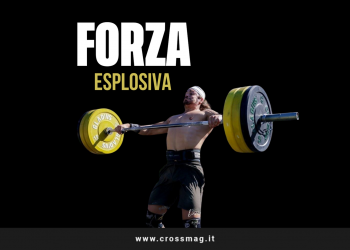La race, with its characteristic azione ammortizzante impact with the ground and prolonged muscle exercise is certainly an excellent preventive factor towards theOsteoporosis.
Studies on this are countless. In fact, in a comparison between sedentary and middle distance runners, the latter present one higher bone density at the level of the feet, femur and vertebrae.
In fact, all this has a logic, linked precisely to the stimulus that running creates on the bones every time a foot hits the ground.
If the runner then decides, after the age of 40, to include training sessions force, the result will be to live a peaceful old age.
Regular exercise is a foundation of intervention programs in the management of osteoporosis:
BONE PEAK: is very important exercise during the developmental age because it allows to reach a high level of bone mass.
FALLS: by improving balance, reflexes and muscle tone, physical activity is able to prevent the risk of falls.
FRACTURE: by improving endurance and bone density, physical activity is able to prevent the appearance of fractures following trauma.
Index
Bones change over time
Bone mass changes during life: during growth steadily increases, reaching its peak between 25 and 30 years of age. Later it decreases, at different speeds between the male organism and the female organism.
Lexercise and nutrition have a particular influence on the formation of bone tissue, especially during growth: infancy and youth, in fact, are the decisive period during which the maximum bone mass, predefined by the genes, will be reached or not.
During adulthood, then, it will essentially be a matter of conserving this mass. To do this, one must first conduct one healthy life. Physical exercise makes the bones more resistant and helps to preserve their mass, especially if he puts them under a certain load.

Throughout life, bones go through a continuous process of destruction and regeneration, which renews old, fragile and perhaps already cracked bones, and adapts the skeleton to the intensity of the stresses.
To guide this complex dynamic, very specific steps are taken cell types and chemical signals. Healthy bone tissue is constantly regenerated.
First the osteoclasts they remove old tissue by digging holes in the bone matrix, the so-called lacunae. Then the osteoblasts take over and fill these gaps with new bone.
Risk factors for osteoporosis
The risk of osteoporosis is dictated by the following factors:
- Età: as the years go by, bone density decreases for everyone.
- Gender: women tend to be more likely than men to encounter osteoporosis problems. After the age of 50, one in three women suffers at least one spontaneous fracture, compared to one in seven men. This phenomenon is greatly influenced by the lack of estrogen that accompanies menopause.
- Geni: If there are people with osteoporosis in the family, the probability of having to face the same problem increases. Lifestyle: poor diet and insufficient exercise weaken the bones. Even those who smoke and drink too much alcohol endanger their body.
- medicines: prolonged intake of cortisone increases the risk of osteoporosis.
- Illnesses: bones can be weakened, for example, by persistent inflammations, endocrine imbalances, intestinal nutrient absorption disorders or kidney problems.
A trio ally for the bones
Football: since childhood it plays a very important role in the development and preservation of bones. The organism accumulates it in the skeleton also to allocate it to a whole series of vital functions, for example the  heart rate regulation, correct transmission of nerve signals and blood clotting.
heart rate regulation, correct transmission of nerve signals and blood clotting.
Protein: approximately one third of the bone mass, and also the muscles, are composed of proteins, a sufficient supply is required. For the metabolism foods that contain both proteins and a sufficient quantity of calcium are particularly valuable.
Vitamin D: promotes the absorption of calcium in the intestine, acts directly on the bone cells and, in this way, is important for the hardening of the bone tissue. Vitamin D is formed in the skin under the action of ultraviolet sunlight.
Who does motion in the sunlight for at least 30 minutes every day (and, for this short period of time, without protective cream) it guarantees a sufficient basic contribution.
With age, however, the body's ability to produce vitamin D on its own decreases dramatically.

Dr. Shuela Curatola
Website: Nutrition
Facebook page: Shuela Curatola











